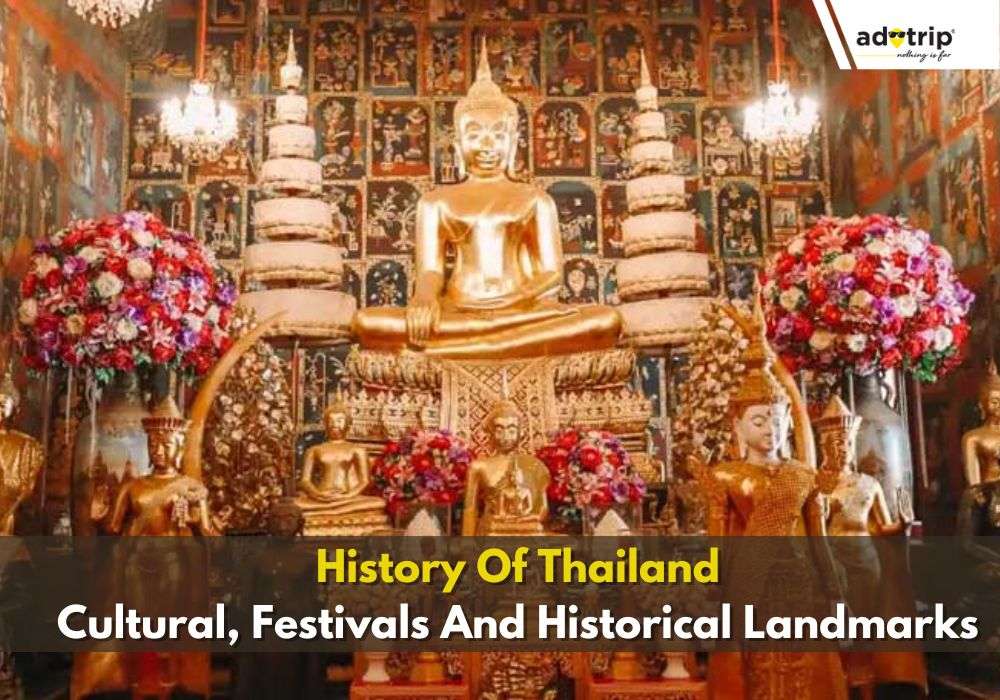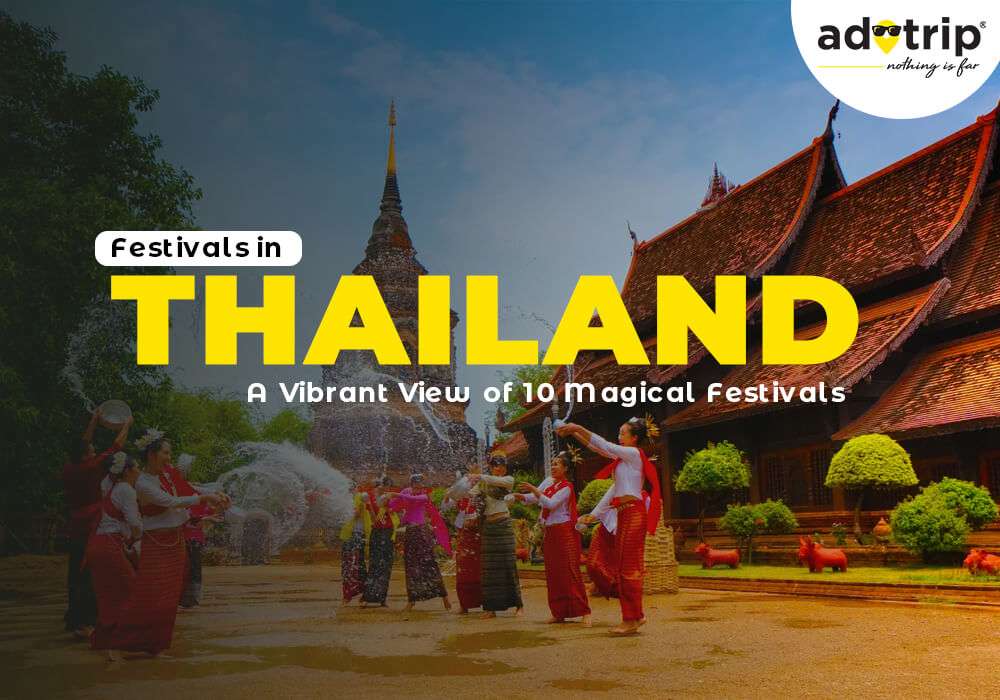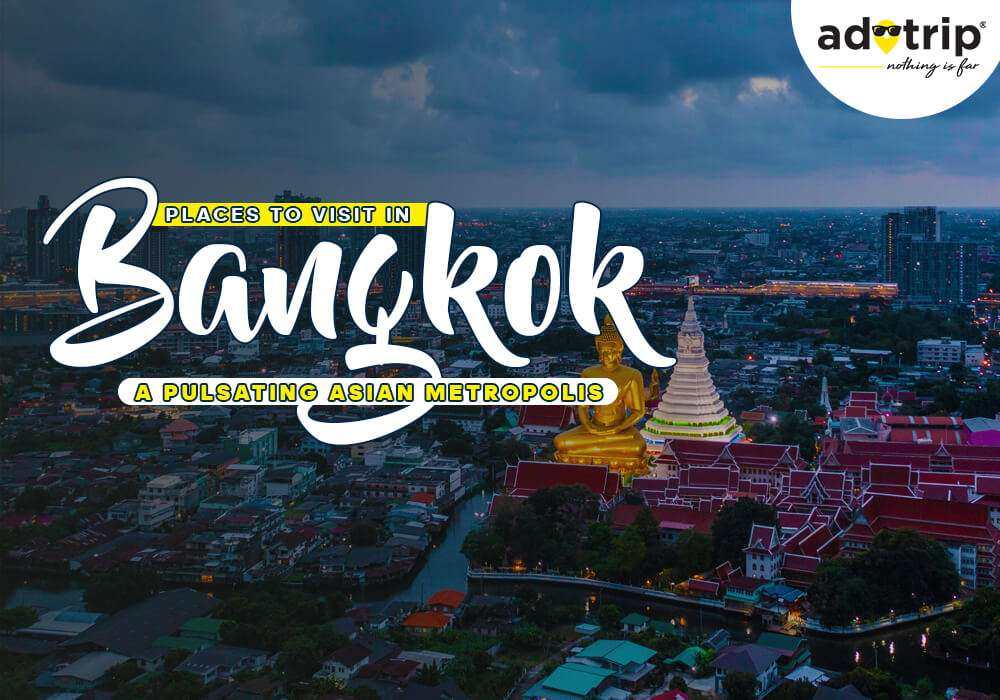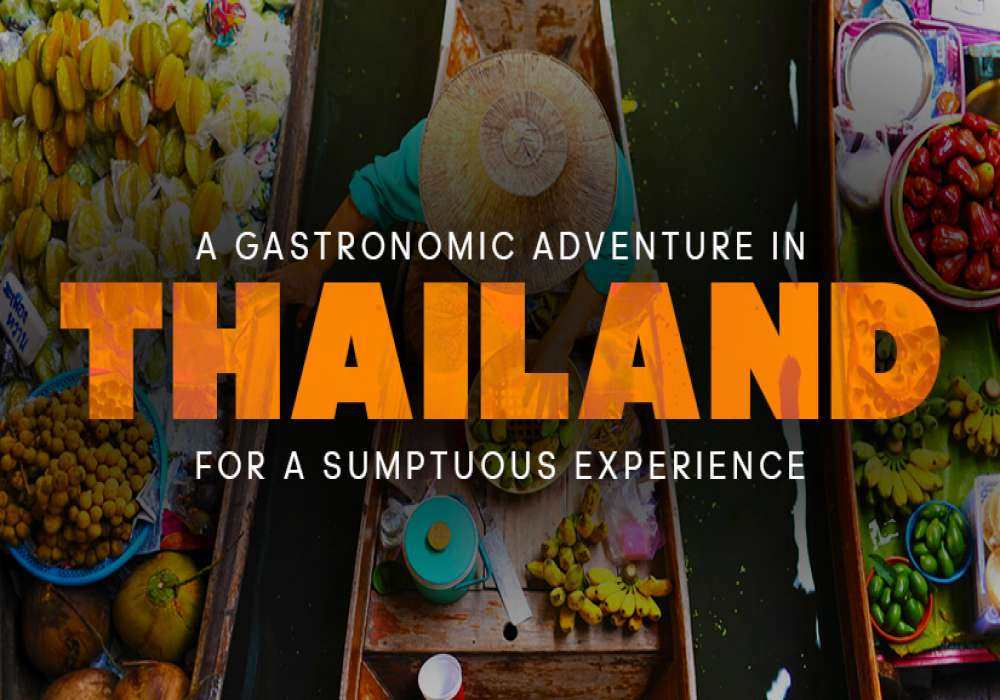
Last Updated At: 31-Jan-2025
History Of Thailand: Cultural, Festivals And Historical Landmarks
Thailand is home to Buddhist temples, exotic wildlife, and spectacular islands. It is also known for its fascinating history, unique culture, and delectable local food. Thailand was known as Siam until 1939 when the government officially changed its name to "Thailand" to promote nationalism and modernization. The name "Siam" was restored briefly from 1945 to 1949, only to be changed back to Thailand in 1949.
Thailand is the only Southeast Asian country that was never colonised by a European country. In fact, in the Thai language, the name of the country is Prathet Thai, which means “land of the free.” The history of Thailand is rich and diverse, encompassing ancient kingdoms, dynasties, and cultural influences. Join us as we journey through the captivating history of Thailand.
Read More: Things To do in Thailand
List Of History of Thailand
From the legendary Ayutthaya Kingdom to the modern era, Thailand's history is a testament to resilience and cultural vibrancy. Explore the tales of kings and warriors, and uncover the traditions that have shaped this remarkable nation. So, let’s begin a journey through the captivating history of Thailand today!
- Sukhothai Kingdom | Birth of Thai Civilization
- Ayutthaya Dynasty | Majestic Rule Emerges
- Siamese-Burmese Wars | Turbulent Conflicts Arise
- Thonburi Transition | Modernization Initiates
- Rattanakosin Reign | Bangkok's Cultural Shift
- Chakri Dynasty | Modern Thailand's Founding
- Colonial Struggles | Sovereignty Defended
- World War II Impact | Thai Identity Altered
- Economic Boom | Thailand's Growth Spurt
- Globalisation Challenges | Modern Dilemmas
1. Sukhothai Kingdom - Birth of Thai Civilization
The Sukhothai Kingdom stands as the cradle of ancient Thai history, marking the birth of Thai civilization. Established in the 13th century, it was a time of great cultural and artistic flourishing, with the famous Sukhothai style of art and architecture emerging. The kingdom's capital, Sukhothai, became a centre of Buddhist learning and artistic expression, with its iconic temples and statues reflecting the spiritual and creative essence of the era. Today, remnants of this golden age can still be seen in the UNESCO World Heritage Site of Sukhothai Historical Park, preserving the legacy of Thailand's early civilization.
2. Ayutthaya Dynasty - Majestic Rule Emerges
The Ayutthaya Dynasty is a pivotal period in the historical timeline of Thailand, marking the emergence of majestic rule and significant territorial expansion. Founded in the 14th century, the Ayutthaya Kingdom flourished as a powerful empire, establishing itself as a dominant force in Southeast Asian history. Its capital, Ayutthaya, was a bustling centre of trade and culture, adorned with grand palaces, temples, and monuments. Under the rule of successive kings, Ayutthaya reached its zenith, becoming one of the wealthiest and most cosmopolitan cities in the region, a testament to the kingdom's enduring influence.
Also Read - Beaches In Thailand
3. Siamese-Burmese Wars - Turbulent Conflicts Arise
The Siamese-Burmese Wars epitomised the tumultuous period in Thai history when neighbouring powers clashed over territorial dominance. As a crucial chapter in the historical timeline of Thailand, these conflicts between the Siamese Kingdom origins and the Burmese Empire shaped the region's geopolitical landscape for centuries. Characterised by fierce battles and shifting alliances, these wars were marked by periods of conquest, resistance, and territorial concessions, leaving a profound impact on both sides. Despite the challenges, the Siamese Kingdom's resilience and strategic diplomacy ultimately secured its sovereignty and preserved the cultural heritage of Thailand amidst the turmoil.
4. Thonburi Transition - Modernization Initiates
The Thonburi Transition represents a significant juncture in Thai history when the kingdom underwent transformative changes towards modernization. Following the fall of Ayutthaya in the late 18th century, Thonburi emerged as the new capital under King Taksin, ushering in an era of renewal and innovation. With its strategic location along the Chao Phraya River, Thonburi became a vibrant centre of trade and commerce, fostering economic growth and cultural exchange. The period witnessed the revival of Thai arts, literature, and architecture, laying the groundwork for Bangkok's ascent as a global city and cultural hub in the centuries to come.
5. Rattanakosin Reign - Bangkok's Cultural Shift
The Rattanakosin Reign marks a pivotal phase in Thailand's Monarchy History, characterised by Bangkok's transformation into a modern metropolis and the epicentre of Thai culture and governance. Established in the late 18th century by King Rama I, the Rattanakosin Kingdom saw the founding of Bangkok as the new capital, symbolising a cultural renaissance and political consolidation. Amidst the grandeur of royal palaces, temples, and monuments, Bangkok emerged as a beacon of cultural diversity and artistic expression, attracting scholars, artists, and traders from across Southeast Asia and beyond.
Also Read - Best Places To Visit In Bangkok
6. Chakri Dynasty - Modern Thailand's Founding
The Chakri Dynasty marks the beginning of Modern Thailand's Founding, with its establishment in the early 19th century by King Rama I. As the ruling dynasty of Thailand, the Chakri monarchs played a central role in shaping the country's political, social, and cultural landscape. Under their reign, Thailand experienced periods of stability, reform, and modernization, fostering economic development and diplomatic relations with the global community. Today, the Chakri Dynasty remains a symbol of Thailand's rich heritage and enduring monarchy, embodying the spirit of resilience and adaptability in the face of changing times.
7. Colonial Struggles - Sovereignty Defended
The Colonial Struggles represent a critical period in Thailand's history when the kingdom faced external threats to its sovereignty and independence. As European powers vied for control over Southeast Asia in the 19th century, Thailand found itself caught in the crosshairs of colonial expansion. Despite facing immense pressure and diplomatic challenges, Thailand managed to maintain its autonomy and resist foreign domination through strategic diplomacy and internal reforms. The period of colonial struggles serves as a testament to Thailand's resilience and determination to defend its cultural heritage and national identity against imperial encroachment.
8. World War II Impact - Thai Identity Altered
The impact of World War II on Thailand's history was profound, altering the country's geopolitical dynamics and national identity. As the world plunged into global conflict, Thailand faced the challenge of navigating between the competing interests of Axis and Allied powers. Ultimately, Thailand aligned itself with Japan, hoping to safeguard its sovereignty and territorial integrity. However, the war brought significant social, economic, and political upheaval to Thailand, leading to internal strife and challenges to the traditional monarchy. In the aftermath of the war, Thailand underwent a period of reconstruction and soul-searching, reshaping its identity in a changing world.
Read More - Waterfalls in Thailand
9. Economic Boom - Thailand's Growth Spurt
The Economic Boom of the late 20th century marked a transformative period in Thailand's history, propelling the country towards rapid industrialization, urbanisation, and economic growth. Fueled by government policies promoting export-oriented industries and foreign investment, Thailand experienced a surge in manufacturing, tourism, and infrastructure development. The bustling metropolis of Bangkok emerged as a regional financial centre and cosmopolitan hub, attracting investors, entrepreneurs, and tourists from around the world. Despite economic challenges and occasional setbacks, Thailand's growth spurt laid the foundation for its emergence as a dynamic and resilient economy in Southeast Asia.
10. Globalisation Challenges - Modern Dilemmas
The challenges of globalisation have brought both opportunities and dilemmas for Thailand in the 21st century, reshaping its society, economy, and identity in profound ways. As the forces of globalisation have intensified, Thailand has grappled with issues of economic inequality, environmental degradation, and cultural homogenization. Rapid urbanisation and technological advancements have transformed the fabric of Thai society, creating new opportunities for innovation and entrepreneurship but also exacerbating social disparities and cultural tensions. In navigating these modern dilemmas, Thailand continues to seek a balance between tradition and progress, resilience and adaptability, as it charts its course in an increasingly interconnected world.
Immerse yourself in the rich history of Thailand by exploring its ancient kingdoms, historical landmarks, and cultural heritage. From the Sukhothai Kingdom to modern times, Thailand's story is filled with tales of resilience, innovation, and cultural vibrancy. Whether you're visiting historical sites, learning about Thai monarchy history, or delving into Southeast Asian history, there's always more to discover. So, come and explore the wonders of Thailand's past, and let its history captivate your imagination. Start your journey today and experience the rich tapestry of Thailand's historical legacy firsthand!
Also Read - Best Scuba Diving Places In Thailand
Plan your visit with Adotrip today. Obtain a wealth of information and end-to-end travel assistance and book flights, hotels and tour Packages under one roof.
With us, Nothing is far!
Book Thailand Tour Packages
Frequently Asked Questions About the History of Thailand
Q1. What is the ancient history of Thailand?
A1. The ancient history of Thailand encompasses the rise of various kingdoms, such as the Sukhothai and Ayutthaya, marking significant periods of cultural, political, and architectural development.
Q2. Who were the earliest inhabitants of Thailand?
A2. The earliest inhabitants of Thailand were various indigenous peoples and ethnic groups, including the Mon, Khmer, and Proto-Thai peoples, dating back thousands of years.
Q3. What are the major historical events in Thailand's history?
A3. Major Thailand's historical landmarks in Thailand's history include the establishment of ancient kingdoms like Sukhothai and Ayutthaya, conflicts with neighbouring empires, the rise of the Chakri dynasty, colonial resistance, and modernization efforts.
Q4. Who were the notable rulers and leaders in Thailand's past?
A4. Notable rulers and leaders in Thailand's past include:
- King Ramkhamhaeng of Sukhothai
- King Naresuan of Ayutthaya
- King Taksin of Thonburi
- King Rama I of the Chakri dynasty
- King Bhumibol Adulyadej (Rama IX)
Q5. How has Thailand's history influenced its culture and traditions?
A5. Thailand's history has profoundly influenced its culture and traditions by shaping its art, architecture, language, religion, and societal norms.
--- Published By Adotrip
Latest Blogs

Long Weekends In India 2025 - List of Holidays

Kazakhstan Travel Guide 2025: Affordable Luxury, Visa Free E...

Think Ayodhya is Just Temples? Discover Its Hidden Artistic...

Why Azerbaijan is the Best Budget Friendly Alternative to Sw...














 Dubai
Dubai Malaysia
Malaysia USA
USA





